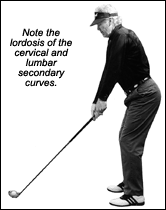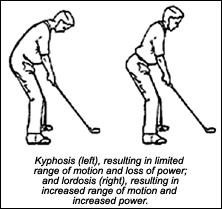Some doctors thrive in a personality-based clinic and have a loyal following no matter what services or equipment they offer, but for most chiropractic offices who are trying to grow and expand, new equipment purchases help us stay relevant and continue to service our client base in the best, most up-to-date manner possible. So, regarding equipment purchasing: should you lease, get a bank loan, or pay cash?
The Athletic Position
Once the decision is made to hit a golf ball and the swinging motion begins, the club shaft will twirl around the body at anywhere from 90-115 mph. If your patient is not in the athletic position, he or she may lose their balance. Loss of balance puts your patient at risk of injury.
For any athlete, the athletic position can be described as a state of readiness for motion and movement in any direction. There is positional alignment of the key load-bearing joints of the body (shoulders, hips, knees and ankles) in the frontal and saggital planes. The upright spinal column maintains positional lordosis of the secondary curves.

Sound golf posture is both static and dynamic. Static posture is responsible for your patient's overall alignment at the address position before the swing begins. The ability to maintain good posture during the golf swing is a measure of a golfer's dynamic postural strength and fitness.

The secondary spinal curves relate to your patient's ability to rotate for a powerful golf swing. We have been taught that the position of the structure dictates the function of the structure. Good golf posture requires that the secondary spinal curves be in lordosis. The secondary spinal curves provide mechanical leverage for strength and facilitate the patient's ability to rotate. Poor golf posture, with a collapse of the secondary curves, restricts spinal motion. This will cause the golfer to compensate by overswinging. Continuous overswinging leads to soft-tissue injuries.
Clinical Examination and Treatment Protocols
If a patient has unstable posture due to loss of secondary spinal curves, proceed with the following:
- extension traction of cervical and lumbar spine;
- upper thoracic extension stretching and exercise;
- soft-tissue release of the psoas and quadriceps; and
- restoration of hip function, with emphasis on the abductors and adductors.

Jeffry Blanchard, DC
Encinitas, California
jeff@doctorforgolf.com
www.DoctorForGolf.com



